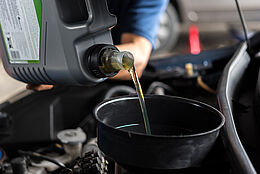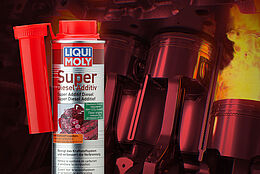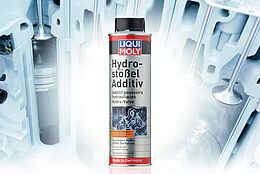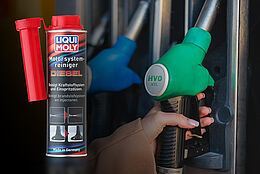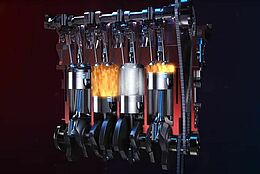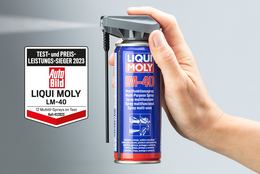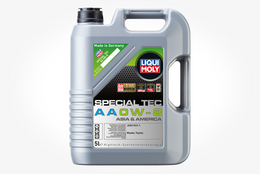- 6min
The composition of modern oils

Crude petroleum – the basis of all oils
Crude petroleum forms the basis of many modern oils. It was formed millions of years ago from dead plankton that sank to the sea floor. Over time, sand and rock were deposited on top, which led to the conversion to crude oil under the exclusion of oxygen, pressure and heat. The basic building blocks of crude petroleum are hydrocarbon compounds, which can occur in various chain lengths.
The three main types of base oils
Mineral base oil
Mineral base oil is the simplest and oldest form of base oil. It is obtained directly from crude oil by heating it and distilling it into its components (separating it). Then unwanted and damaging components are removed by refining processes such as dewaxing. Finally, hydrogen is added to the raffinate in a targeted manner (hydrofinishing) in order to “repair” the open molecule chains and thus increase the aging stability.
Fully synthetic base oil
Fully synthetic base oil is characterized by its very good thermal stability and aging resistance, but is complex to manufacture. So-called naphtha (petrol without additives) serves as the base product. The liquid naphtha is cracked in the first step, i.e. the molecular chains (C5 - C12) are split and broken down to a length of C2. The former liquid is now gaseous. In the consequent synthesis process the short molecule chains (C2) are added to long molecule chains (C20 - C35) and sealed by adding hydrogen (hydrogenation).
Hydrocracked base oil
Hydrocracked base oil combines the positive properties of mineral and fully synthetic base oils. It offers very good thermal stability and aging resistance with absolute material compatibility. The basis for hydrocracked base oils are formed by the paraffin taken from the mineral oil extraction. This consists of long-chain molecular compounds (> C35), which are broken down in the presence of a catalyst at high pressure and temperatures and shortened to a usable length (C20 - C35) (catalytic hydrocracking). The liquid is then distilled in a vacuum to prevent the molecular chains from cracking, and any kerosene residues are removed.

A pure base oil alone does not meet the numerous tasks that today’s lubricants have to fulfill. Modern oils, in particular engine oils and lubricating oils, do not only consist of one base oil, but are also composed of combinations of different base oils. In addition to this composition, special additives in particular fulfill important functions in engine oils.
The additive package – additives in engine oil
The additive package is a mixture of various additives that are added to the heated base oil. Depending on the requirements, various additives in the engine oil are combined into a package (additive package). They improve existing functions or give oils new properties and play a decisive role in the performance and durability of lubricants.
Oil properties that can be influenced by additives
| Properties | Can be influenced by additives | Can only be achieved with additives | Cannot be affected by additives |
| Cooling | X | ||
| Resistance to aging | X | ||
| Viscosity/temperature | X | ||
| Corrosion protection | X | ||
| Dissolves dirt | X | X | |
| Dispersion capacity | X | X | |
| High pressure properties | X | X | |
| Foam behavior | X | X | |
| Air discharge capacity | X | ||
| Water separation capacity | X |
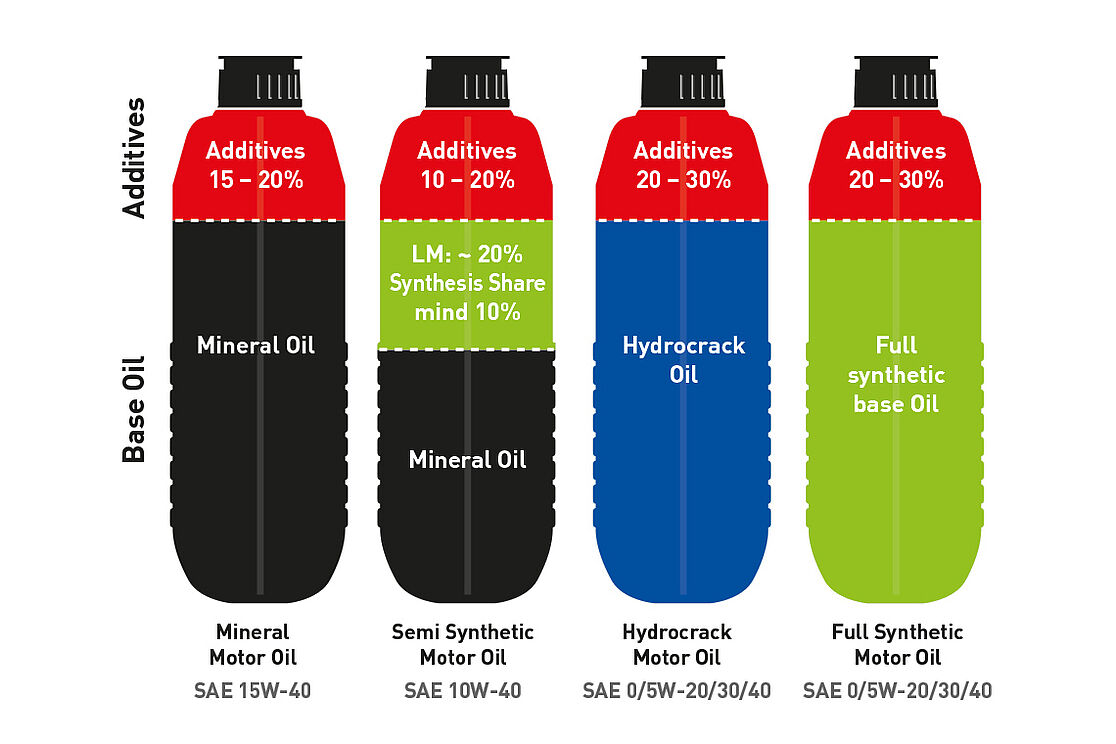
Additive content in engine oils
Specific additives and their functions

Detergents
Detergents are wash-active substances in the oil, which prevent the formation of deposits or free the motor of them. If these ingredients are used up by exceeded oil change intervals, for example, the result is the increased formation of deposits. As a result, the wear in the engine increases measurably.

Extreme Pressure Additive (EP additive)
Extreme Pressure Additives (EP additives) are added to the oil in the form of sulfur or phosphorous compounds in order to prevent fusing due to high pressures or loads of the friction partners. They are indispensable in lubricants, as high temperatures occur in the lubricant under high pressures or loads. This causes sulfur (sulfur carriers) or a phosphorous derivative (compounds containing phosphorous) to be released from the EP additive. Under these conditions, the released substance immediately reacts with the metal surface to metal sulfides or phosphates. These compounds form protective layers on the metal surface, which shear off like layers under high pressure and thus prevent the metal surfaces from fusing together.

Pour Point Depressant (PPD)
The PPD additive lowers the solidification point of the oil and thereby improves the low temperature properties. It ensures that the oil remains liquid even at low temperatures by changing the structure of the wax crystals in the base oil and significantly slowing their growth.

Viscosity index improvers
Viscosity index improvers are high-molecular polymers (combination of macromolecules) which influence the temperature dependence of oil viscosity due to their special structure. At low temperatures, the polymers contract, which reduces the oil’s flow resistance and thus compensates for the change in viscosity of the base oil.
Classifications and specifications of engine oils
Over the past decades, various organizations have been working on the classification of engine oils in order to create internationally uniform standards for viscosity and quality.
Manufacturer-dependent specifications indicate which engine or gearbox the lubricants are compatible with and officially approved by the vehicle manufacturer.



